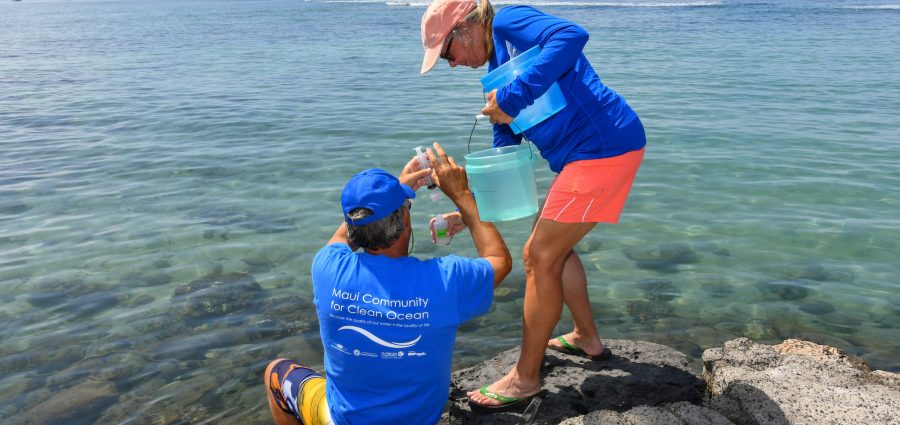With the New Year approaching, Maui residents are looking back at the widespread coral bleaching that occurred in 2019 and considering ways to help their local coral reefs better survive warming ocean waters in the future.
One answer is to work for cleaner ocean water in the nearshore areas where Maui’s fringing coral reefs are found. That’s where a unique volunteer-based ocean water quality monitoring program comes in. The program, called “Hui O Ka Wai Ola” (Association of Living Waters), monitors ocean water quality at 41 locations in South and West Maui, working with more than 35 dedicated volunteers from the community.
“Coral reefs are extremely susceptible to even slight changes in ocean chemistry,” says Amy Hodges, Programs Manager at Maui Nui Marine Resource Council, an award-winning nonprofit that helped create and continues to co-manage the monitoring program with partner organizations The Nature Conservancy and West Maui Ridge to Reef Initiative. “To protect the corals, we need to understand the ocean chemistry of our coastal areas, so we can better protect our reef ecosystems from harm and improve their resiliency against stressors such as warming ocean water.”
The program works in close partnership with the State of Hawaii Department of Health Clean Water Branch, following strict protocol to generate reliable data that will help local government and the community identify where and why ocean water quality is impaired, to better identify causes and enact solutions.
The program gathers data on 13 water quality factors, including turbidity, temperature, salinity, dissolved oxygen (DO), pH and dissolved nutrients including nitrogen and phosphorous at each site.
“Excessive amounts of nutrients such as nitrogen and phosphorous from fertilizers or wastewater can cause excessive overgrowths of algae, which can smother corals,” says James Strickland, Project Manager. “Sediment washing into the ocean from unused agricultural fields, construction sites or areas where wildfires have stripped away vegetation can also stress corals.”
“We gather this data to help our community solve these ocean water quality problems, and ultimately, to give Mauiʻs reefs their best shot at survival,” says Strickland.






